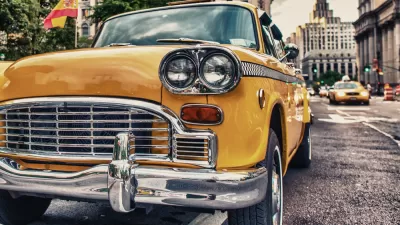As cities across the world expand their infrastructure to support more bicycle- and pedestrian-friendly environments, outdated laws still support the use of streets by automobiles over people.
In most states, when a pedestrian or bicyclist is struck and killed by a moving vehicle, the driver of the vehicle can often leave the scene "without criminal charges, civil liabilities or administrative penalties." With cities across the country seeking to make their streets more accessible to all users, Alex Marshall argues that, "Without laws protecting bikers and walkers, however, the goal of having truly livable cities in America remains out of reach."
"Right now bikers -- and, to some extent, pedestrians -- are in a
Catch-22," writes Marshall. "It's long been known that there is a 'safety in numbers'
phenomenon. The more people walk or bike, the more the drivers of cars
look out for them. But people won't ride bicycles if it's not safe, and
it's not safe because people don't ride bicycles. A big step forward is
to put the primary responsibility for keeping streets safe on the
drivers of the two- and 10-ton vehicles that routinely kill people."
Marshall looks to Europe, where "cycling is an integral part of life," for a potential legal solution - "strict liability."
"It [strict liability] means that if you, the driver, strike a pedestrian or cyclist, you
are automatically at fault, even if the walker or cyclist literally
jumps out in front of you. This may not seem fair, but a system where a
cyclist and a driver are on equal footing is not a fair one either,
because the results of any collision are so unequal. A system needs to
acknowledge that it is the driver of a car or truck that is doing
something inherently dangerous."
FULL STORY: Bikers, Walkers Need Cities to Protect Them

Alabama: Trump Terminates Settlements for Black Communities Harmed By Raw Sewage
Trump deemed the landmark civil rights agreement “illegal DEI and environmental justice policy.”

Planetizen Federal Action Tracker
A weekly monitor of how Trump’s orders and actions are impacting planners and planning in America.

The 120 Year Old Tiny Home Villages That Sheltered San Francisco’s Earthquake Refugees
More than a century ago, San Francisco mobilized to house thousands of residents displaced by the 1906 earthquake. Could their strategy offer a model for the present?

Ken Jennings Launches Transit Web Series
The Jeopardy champ wants you to ride public transit.

BLM To Rescind Public Lands Rule
The change will downgrade conservation, once again putting federal land at risk for mining and other extractive uses.

Indy Neighborhood Group Builds Temporary Multi-Use Path
Community members, aided in part by funding from the city, repurposed a vehicle lane to create a protected bike and pedestrian path for the summer season.
Urban Design for Planners 1: Software Tools
This six-course series explores essential urban design concepts using open source software and equips planners with the tools they need to participate fully in the urban design process.
Planning for Universal Design
Learn the tools for implementing Universal Design in planning regulations.
Clanton & Associates, Inc.
Jessamine County Fiscal Court
Institute for Housing and Urban Development Studies (IHS)
City of Grandview
Harvard GSD Executive Education
Toledo-Lucas County Plan Commissions
Salt Lake City
NYU Wagner Graduate School of Public Service



























